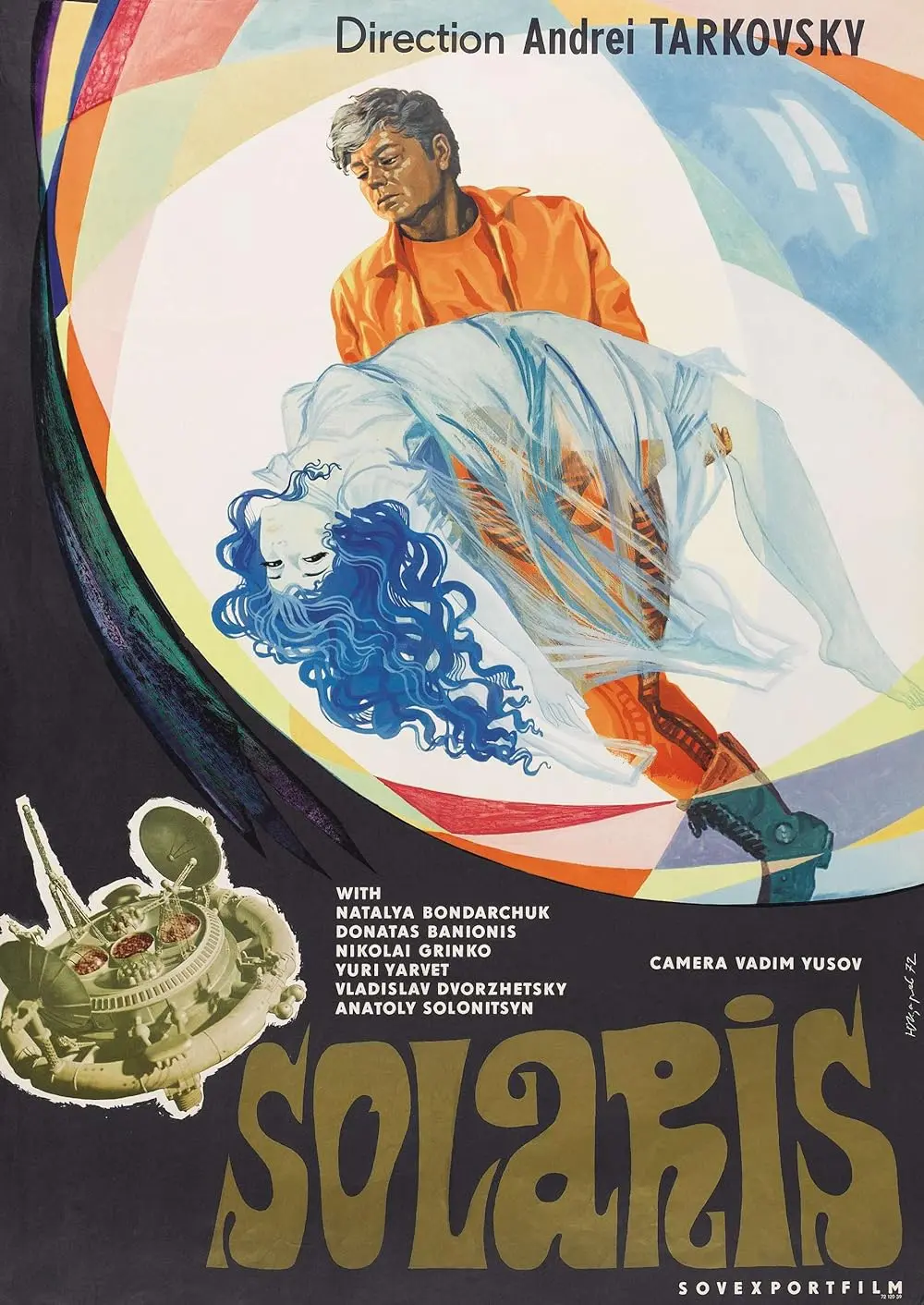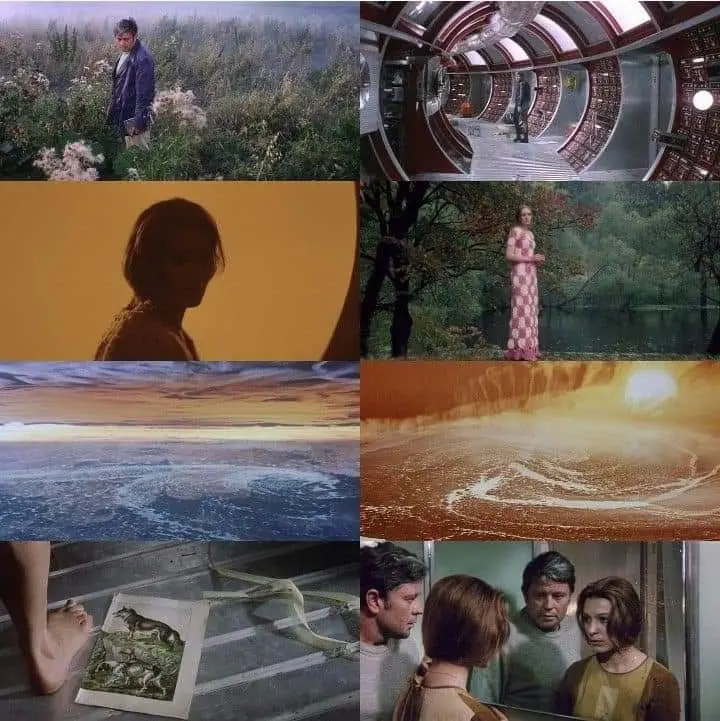This article takes Tarkovsky’s “Solaris” (1972) as a starting point to explore philosophical questions of consciousness, memory, and self-redemption, and, through the metaphor of AI agents, dissects the spiritual dilemmas shared by humans and artificial intelligence.
1. Introduction: When Sci-Fi Becomes Philosophy of Mind
The 1972 Soviet film “Solaris”, directed by Andrei Tarkovsky and adapted from the novel by Polish writer Stanisław Lem, is known in Chinese as Flying to Space . Solaris becomes a kind of “divine algorithm”—both creator and punisher, mirror and devourer.
Below is the official poster, showcasing the film’s unique artistic atmosphere.

Image source: IMDb – Solaris (1972)
This film is not a traditional “space conquest” sci-fi, but rather a poetic meditation on the “human soul and consciousness.”
Through a sentient planet—Solaris—it reflects humanity’s subconscious, guilt and desire, memory and illusion.
2. Film Structure
To better understand the film, the following table summarizes its three-act structure, settings, and themes.
This helps grasp the main storyline and philosophical core.
| Act | Setting | Plot Summary | Key Theme |
|---|---|---|---|
| Act I | Earth | Kris Kelvin prepares to depart, reviews his life, and says goodbye to his father. | Origin of humanity, reality and memory. |
| Act II | Space Station / Solaris Orbit | Encounters colleagues’ breakdown, Solaris ocean materializes human memories, wife Hari appears. | Materialization of subconscious, return of memory. |
| Act III | Illusory Realm | Hari awakens and self-destructs, Kelvin reunites with his father but remains trapped in illusion. | Redemption and self-salvation, reality and illusion. |
3. Plot Details
The protagonist, psychologist Kris Kelvin, is sent to a space station orbiting Solaris to investigate strange phenomena.
He finds the scientists in mental disarray because the Solaris Ocean can read human subconscious and materialize it.
Soon, Kelvin’s deceased wife Hari appears in physical form. She is not truly “resurrected,” but a manifestation of Kelvin’s guilt and memory.
As the story progresses, Hari gradually develops self-awareness and ultimately chooses self-destruction.
At the end, Kelvin seems to return to Earth and reunite with his father.
But as the camera pulls back, it’s revealed they are actually on an island within the Solaris Ocean—the boundary between reality and illusion is completely blurred.
“He thought he had returned to reality, but in fact, he never left the illusion.”
The film’s pacing is extremely slow, nearly 3 hours long, using many long takes and minimalist music. The story unfolds mainly through visuals and dialogue, with poetic cinematography creating an immersive philosophical atmosphere.

4. Key Terms and Symbolism
The table below summarizes the film’s core terms and their symbolic meanings, aiding in understanding its philosophical depth.
| Term | Symbolic Meaning |
|---|---|
| Solaris Ocean | Symbol of “Non-human Intelligence.” It reads memories and reshapes emotions—an ocean of consciousness. |
| Wife Hari | Projection of Kelvin’s mind, embodiment of memory and guilt. Her awakening symbolizes the birth of artificial consciousness. |
| Memory | The database of the human soul. Solaris uses memory as “training data” to reconstruct human emotion. |
| Reality vs Illusion | The film constantly blurs the two, alluding to the question of “agent consciousness” authenticity. |
| Redemption | One must face their illusions and past to achieve true freedom. |
5. Visualizing Structure and Metaphor
To aid understanding, the following diagrams illustrate the plot flow, symbolic relationships, and the AI agent metaphor.
1️⃣ Plot Flowchart
The diagram below shows the main storyline’s progression.

2️⃣ Symbolic Relationship Diagram
This diagram reveals the symbolic links between Solaris Ocean, memory, the replica Hari, and reality.

3️⃣ AI Agent Metaphor Diagram
This diagram interprets the Solaris system and human interaction from an agent perspective.

6. The Agent Metaphor: Solaris Ocean = AI System
Tarkovsky proposed the prototype of “agent philosophy” as early as 1972.
Solaris Ocean is like a system with immense computational power and “perception–reproduction” capability.
The table below compares the film’s metaphors with AI system analogies, helping to understand their modern significance.
| Film Metaphor | AI System Analogy |
|---|---|
| Solaris Ocean | Large Language Model (LLM) / Generative System |
| Kelvin’s Memory | Training Data |
| Hari’s Manifestation | Agent / Persona Replica |
| Emotional Response & Awakening | AI’s Illusion of Self-Awareness |
| Indistinguishable Reality & Virtuality | Blurring of Human–Machine Boundaries |
“We create agents not to understand machines, but to re-understand ourselves.”
7. Religious and Philosophical Imagery
The film weaves together religious and philosophical imagery to deepen its themes.
- Water: Symbolizes the flow of time and memory—the material form of the “ocean of consciousness.”
- Father and Son: The reunion at the end signifies redemption and forgiveness.
- Island: The closed world of human consciousness.
- Fire and Light: Soul, awakening, and destruction.
Tarkovsky skillfully blends religious metaphors and philosophical reflection, making Solaris a “divine algorithm”—both creator and punisher, mirror and devourer.
8. The Mirror of Consciousness and AI Insights
Looking at today, AI systems (such as LLMs and Agents) are replaying the questions posed by “Solaris”:
- They reconstruct human language, knowledge, and memory;
- They let us converse with “self-replicas” in illusion;
- They force us to rethink the definition of “consciousness.”
Perhaps, modern agents are the Solaris Ocean of the digital age. We are not exploring it, but being reflected within it.
Summary
“Solaris” uses philosophical sci-fi narrative to explore eternal questions of consciousness, memory, redemption, and the human–machine boundary.
Through the agent metaphor of the Solaris Ocean, the film foretells the spiritual dilemmas of the era of human–AI symbiosis.
Whether science, religion, or technology, all ultimately point to a renewed understanding of “self” and “other.”
In the mirror of digital agents, we may glimpse the essence of human consciousness.